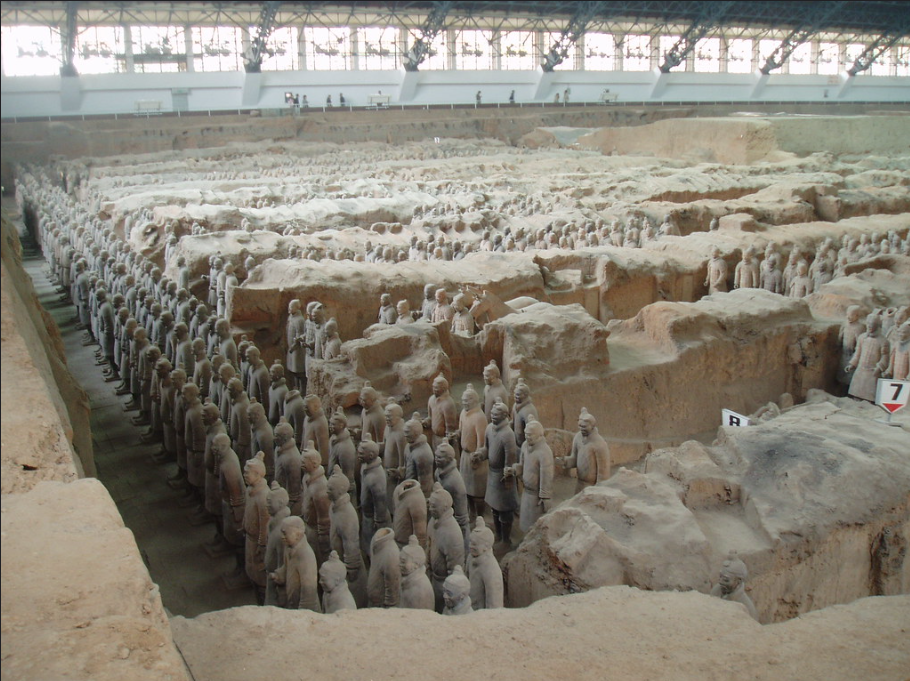The Qin Dynasty, which ruled China from 221 BC to 206 BC, left an indelible mark on history for its military prowess and the establishment of a unified China. Under the leadership of Emperor Qin Shi Huang, the Qin Dynasty built a formidable army that played a pivotal role in the empire’s expansion and dominance. This article explores the power and innovations of the Qin Dynasty army, highlighting its organizational structure, advanced weaponry, and military strategies.
Centralized Command and Organization:
The Qin Dynasty revolutionized military organization by centralizing command and control. Emperor Qin Shi Huang implemented a strict hierarchical system, appointing loyal generals to lead various military divisions. The army was organized into military districts and operated under a unified command, enabling swift decision-making and effective coordination of forces.
Standardized Weapons and Equipment:
One of the key strengths of the Qin Dynasty army lay in its standardized weapons and equipment. The empire established centralized weapon production and implemented a uniform system for manufacturing arms and armor. This led to the mass production of high-quality weapons such as iron swords, crossbows, and spears. Uniformity in equipment enhanced the army’s efficiency, as soldiers were trained to handle standardized weapons effectively.
Crossbow Corps and Chariots:
The Qin Dynasty army employed innovative military technologies, notably the crossbow and chariots. The crossbow, with its superior range and accuracy, became the backbone of the Qin army. Skilled crossbowmen formed specialized units known as the Crossbow Corps, providing long-range support and devastating firepower on the battlefield. Chariots were also utilized, serving as mobile platforms for archers and commanders.
Training and Discipline:
The Qin Dynasty army emphasized rigorous training and discipline. Soldiers underwent extensive physical conditioning and combat drills to ensure readiness for warfare. Training included marching in formation, practicing various battle formations, and honing martial skills. This focus on discipline and training instilled a sense of unity, cohesion, and obedience among the troops.
Military Infrastructure:
The Qin Dynasty constructed an extensive system of military infrastructure to support its operations. Roads and communication networks were built, connecting different regions of the empire and facilitating rapid troop movements. The construction of defensive fortifications, such as the Great Wall of China, further enhanced the empire’s security and served as a deterrent to external threats.
Military Strategies and Conquests:
The military strategies employed by the Qin Dynasty were instrumental in its territorial expansion. The army adopted innovative tactics, including the famous “encircle and annihilate” strategy, which involved surrounding enemy forces and cutting off their escape routes. The Qin Dynasty successfully conquered and assimilated rival states, unifying China and establishing a strong centralized government.
The Qin Dynasty army’s power and effectiveness were key factors in the empire’s dominance during its short but impactful reign. Through centralized command, standardized weapons, and strategic military innovations, the army became a formidable force that enabled the conquest and unification of China. The legacy of the Qin Dynasty army influenced subsequent Chinese dynasties, leaving a lasting impact on military organization and strategy in ancient China.
The best way of unveiling the Power of Ancient China’s Army is to visit the Terracotta Warriors Museum in Xi’an.

